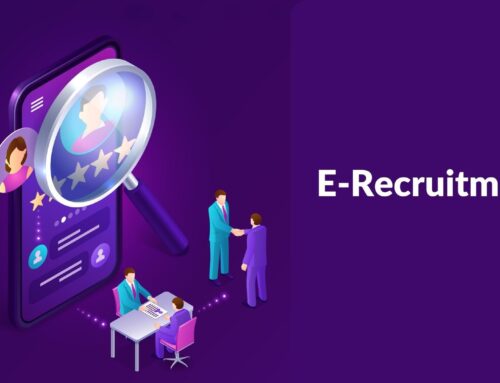Onboarding is a critical step in welcoming new employees to an organization. Effective onboarding training solutions ensure that new hires feel confident, informed, and integrated into their roles and company culture. A well-structured onboarding process can increase employee engagement, reduce turnover, and boost overall productivity.
This blog explores the importance of onboarding training, key components of effective programs, and how organizations can implement innovative solutions to create a lasting impact.
What Are Onboarding Training Solutions?
Onboarding training solutions are programs and tools designed to equip new employees with the knowledge and skills they need to succeed in their roles. These solutions streamline the onboarding process, providing consistent and engaging content that helps employees acclimate to their new environment.
From orientation sessions to interactive e-learning modules, onboarding training solutions can be tailored to suit the needs of different roles, departments, and industries.
The Importance of Onboarding Training
- Boosts Confidence and Productivity:
Training helps new employees understand their responsibilities and how they contribute to organizational goals, enabling them to start contributing effectively sooner. - Enhances Retention Rates:
Employees who experience a positive onboarding process are more likely to stay with the company long-term. - Builds a Strong Company Culture:
Onboarding provides an opportunity to communicate company values, policies, and expectations clearly, fostering alignment and belonging. - Improves Employee Engagement:
Structured training programs keep employees engaged, reducing feelings of uncertainty during the transition period. - Reduces Costs:
By ensuring employees are properly trained from the start, organizations minimize errors, inefficiencies, and rehiring expenses.
Key Components of Effective Onboarding Training Solutions
1. Pre-Onboarding Preparation
- Send welcome emails and provide access to training portals before the employee’s first day.
- Share a checklist of what to expect and prepare for.
2. Role-Specific Training
- Tailor training materials to the employee’s role, focusing on specific tools, systems, and workflows they’ll use daily.
3. Company Orientation
- Provide an overview of the company’s history, mission, values, and culture.
- Familiarize employees with organizational structure and key personnel.
4. Compliance and Policy Training
- Cover essential topics like workplace safety, anti-harassment policies, and data security protocols.
- Ensure employees are aware of industry-specific regulations.
5. Mentorship and Support
- Pair new employees with mentors or buddies who can provide guidance and answer questions.
- Foster open communication channels with managers and HR teams.
6. Interactive Learning Modules
- Use e-learning platforms, gamified quizzes, and videos to create engaging and memorable training experiences.
7. Performance Tracking and Feedback
- Monitor progress through assessments and provide constructive feedback to help employees improve.
8. Continuous Learning Opportunities
- Extend onboarding beyond the first few weeks by offering advanced training sessions and development resources.
Innovative Onboarding Training Solutions
1. Digital Onboarding Platforms
Online platforms like BambooHR, Workday, and SAP SuccessFactors automate onboarding tasks, provide centralized training resources, and track progress seamlessly.
2. Virtual Reality (VR) Training
VR technology immerses employees in realistic scenarios, such as safety drills or customer interactions, enhancing hands-on learning.
3. Gamification
Incorporate game-like elements into training, such as rewards and challenges, to boost engagement and motivation.
4. Mobile Learning Apps
Enable employees to access training content anytime, anywhere, using mobile-friendly applications.
5. AI-Powered Personalization
Use AI to customize training programs based on employee roles, preferences, and skill levels.
Best Practices for Onboarding Training Solutions
- Start Early:
Begin onboarding training before the employee’s first day to ease the transition. - Be Inclusive:
Ensure training materials reflect diversity and inclusivity to create a welcoming environment. - Set Clear Goals:
Define specific objectives for what employees should know and achieve by the end of the onboarding period. - Encourage Collaboration:
Incorporate team-building activities to help new hires establish connections with colleagues. - Gather Feedback:
Regularly solicit feedback from new employees to refine and improve the onboarding process.
Benefits of Modern Onboarding Training Solutions
- Consistency:
Standardized training ensures all employees receive the same foundational knowledge. - Scalability:
Digital onboarding solutions can accommodate organizations of any size, making it easier to onboard multiple employees simultaneously. - Time Efficiency:
Automation and pre-designed modules reduce the time and resources required for manual onboarding. - Improved Performance:
Employees who are well-trained from the outset perform better and adapt more quickly to their roles. - Enhanced Employer Branding:
A seamless onboarding process leaves a positive impression, enhancing the company’s reputation as a great place to work.
Conclusion
Onboarding training solutions are essential for building a strong, capable, and confident workforce. By investing in innovative and effective onboarding strategies, organizations can ensure new hires feel welcomed, prepared, and motivated to succeed.
From digital platforms to personalized mentorship, the options for onboarding training are vast and adaptable. A well-executed onboarding program doesn’t just benefit employees; it also strengthens the organization by reducing turnover, boosting productivity, and fostering a positive company culture.
Whether you’re a growing startup or an established corporation, prioritizing onboarding training solutions is a step toward long-term success.







Leave A Comment